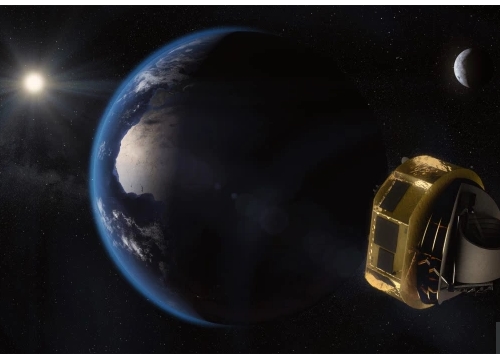WORLDY Dozens of superhabitable planets that are ‘BETTER suited for life than Earth’ discovered ‘close’ to our world

SCIENTISTS have discovered 24 potentially “superhabitable” planets with conditions that may be better for life than Earth.
The mysterious worlds are older, larger, warmer and possibly wetter than our planet, making them prime targets for future alien-hunting missions.
Researchers at Washington State University (WSU) outlined their stunning find in a scientific paper published Monday.
The planets are 100 light-years from Earth, making them too distant to visit, but possible to study with future advanced space telescopes.
Probes like the European Space Agency’s ARIEL mission, due for launch in 2028, are specially designed to seek signs of life on faraway worlds.
“With the next space telescopes coming up, we will get more information, so it is important to select some targets,” WSU scientist Professor Dirk Schulze-Makuch said.
“We have to focus on certain planets that have the most promising conditions for complex life.
“However, we have to be careful to not get stuck looking for a second Earth because there could be planets that might be more suitable for life than ours.”
The team created a “superhabitability criteria”, which they lined up against 4,500 known exoplanets – planets outside the Solar System.
Habitability wasn’t defined as definite signs of life, but as hosting conditions that make them ripe for its growth.
The criteria included being up to 10 per cent larger than Earth, with a surface temperature 5C (9F) above that of our own planet and an age of between 5 billion and 8 billions years old (Earth is 4.5 billion years old).
Worlds also had to exist in their star’s habitable zone – defined as the area in which a planet could support water at its surface – and orbit a star that is cooler than our Sun, meaning it has a longer lifespan.
In total, 24 potentially “superhabitable” planets were found that may have conditions better for supporting life than Earth.
None of the planets conclusively met all five of the criteria laid out by scientists, but one met four of them.
Researchers stressed that the results do not mean the 24 worlds definitely host life.
“Habitability does not mean these planets definitely have life, merely the conditions that would be conducive to life,” WSU said in a press release.
More than 4,500 exoplanets have been detected by scientists but we don’t know much about them.
The next generation of space probes, including ARIEL mission and Nasa’s James Webb telescope, will be able to observe atmospheres in more detail.
ARIEL aims to observe 1,000 planets in detail to give us a more accurate picture of potential alien worlds.
By observing a huge number of planets, scientists hope to reveal secrets about their chemistry, formation and evolution.
The research was published in the journal Astrobiology.



 Creators of mankind
Creators of mankind Description of “Tall white aliens”
Description of “Tall white aliens” Where they came from?
Where they came from? About hostile civilizations
About hostile civilizations The war for the Earth
The war for the Earth “Tall white aliens” about eternal life
“Tall white aliens” about eternal life Video: “Nordic aliens”
Video: “Nordic aliens” Aliens
Aliens Alien encounters
Alien encounters The aliens base
The aliens base UFO
UFO Technology UFO
Technology UFO Underground civilization
Underground civilization Ancient alien artifacts
Ancient alien artifacts Military and UFO
Military and UFO Mysteries and hypotheses
Mysteries and hypotheses Scientific facts
Scientific facts


















